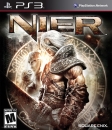JaggedSac said:
I don't think Natal can distinguish fingers anyway. It can measure where the arm is pointing. My question is whether it is a cube with volume of 4 cm? Or is it a cube with 4 cm on each side? |
I sort of assumed that there was an internal separate "hand tracking" mode that used a detailed hand model instead of a full body skeleton, for the times when you needed to use a cursor-based interface in menus, media galleries etc.
Partly because I always assumed that MS wanted to push the very same tech for PCs in education, kiosks, mediacenters, and the very least you would need for universal operation is a precise multitouch pointing feature.
The way it is formulated I read as "a cube of approx. 4 cm side", but if it's a reference to the volume then it's not immensely better: cubic root of 4 cm^3 is approx. 1.6 cm. If it were to read the horizontal/vertical positioning of your hand to move a pointer on-screen that would translate, if you move your hand in a 80cm*50cm (x*y) range in the air, to an input resolution of about 50*30 "points". That would mean a step of almost an inch on your typical screen... only good for the roughest interface, and probably maddening if you ever have to select say music or videos from a list.
If the x/y resolution is 4 cm, that's even worse and you have to cut that in more than half, with on-screen steps of an inch and a half.
Using the angle of your arm (say shoulder-to-wrist) doesn't solve much: unless we're understanding the whole 4cm statement wrong, the angle computed from two points will have an even worse resolution (about half as much, actually).
Averaging helps, of course: at 30 samples per second you can average over, say, the last 10 samples and still have a somewhat responsive cursor. That brings a (square root of 10) factor to your resolution boosting it up to about 150*100, so that tracking the position of your hand in a vertical plane in the air will have an effective resolution of about a 1/5" on-screen. Unless it is 4 cm per side, then we're back to about 70*45 and half an inch.
Either way, it might be acceptable if the interfaces are designed for a rough input as in big buttons, highly zoomed in lists etc (think a smartphone interface). It is totally unacceptable as an input method for a shooter, though.
Oh well, maybe it's all wasted back-of-envelope math anyway. Let's wait to see more precise specs :)




















